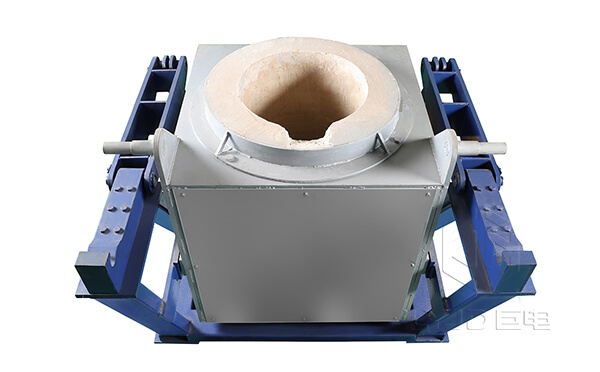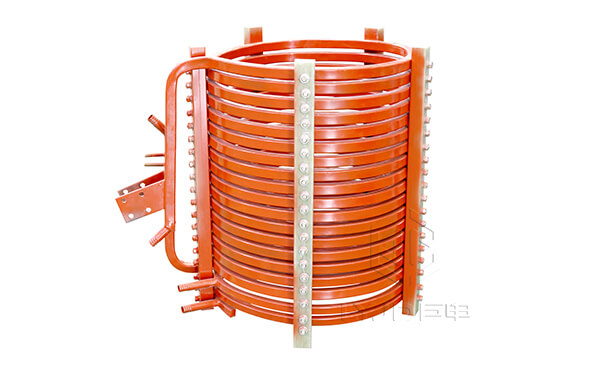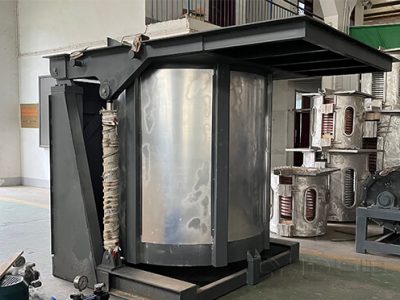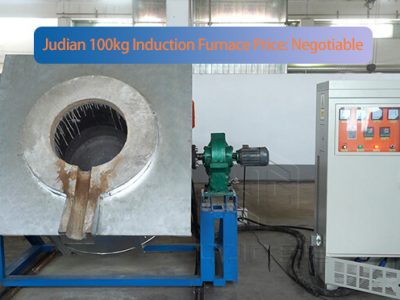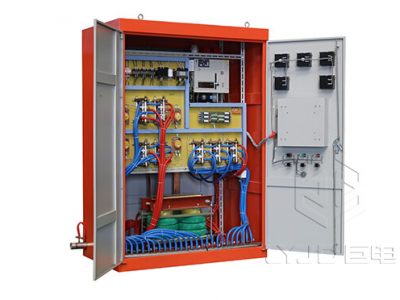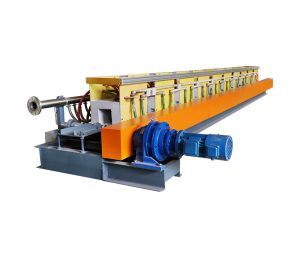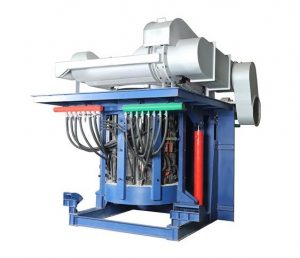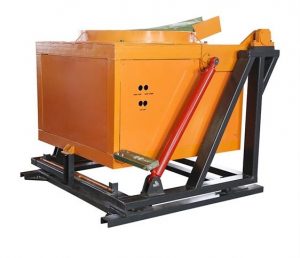An induction furnace is a type of industrial melting furnace that uses electromagnetic induction to heat and melt metal. Induction furnaces offer efficient and controlled heating and melting capabilities, making them widely employed in industries such as automotive, aerospace, manufacturing, and metal production.
Two Types of Induction Furnace
According to the structure of the induction furnace, we can divide the induction furnaces into two main types, coreless and channel.
Coreless Induction Furnace
Coreless induction furnaces have a widely applications in foundries and metal casting operations. They consist of a refractory-lined crucible surrounded by a copper coil. When alternating current passes through the coil, it generates a magnetic field, which induces electrical currents, known as eddy currents, within the conductive material placed in the crucible. These eddy currents generate heat due to electrical resistance, causing the material to melt. Coreless induction furnaces are capable of melting various types of metals, including iron, steel, copper, and aluminum.
Crucible Design
Coreless induction furnaces have a cylindrical or conical crucible made of refractory material, such as silica or alumina. The crucible is resistant to high temperatures and chemical reactions with the molten metal.
Melting Capacity
Coreless induction furnaces are available in various sizes and can melt a range of metal quantities, from a few kilograms to several tons.
Efficiency
These furnaces offer high energy efficiency due to the direct induction heating method. The heat is generated within the metal itself, resulting in minimal heat loss to the surroundings.
Melting Speed
Coreless induction furnaces can achieve rapid melting rates, allowing for efficient production cycles in foundries and metalworking operations.
Temperature Control
For coreless induction furnace, we can precisely control the input power, allowing for accurate temperature regulation during melting and holding stages.
Applications
Coreless induction furnaces are commonly used in the production of cast iron, steel, copper alloys, and aluminum alloys. They find applications in industries such as automotive, aerospace, construction, and manufacturing.
Channel Induction Furnace
Channel induction furnaces, also known as core-type induction furnaces, are typically used for melting and holding larger volumes of metal. They consist of a refractory-lined channel or trough, which acts as the crucible for holding the molten metal, and a coil that surrounds the channel. Similar to coreless induction furnaces, alternating current passing through the coil generates a magnetic field that induces eddy currents in the metal. The eddy currents generate heat, causing the metal to melt. Channel induction furnaces are commonly used for continuous or batch melting operations and are suitable for various metals, including steel, iron, and non-ferrous alloys.
Crucible Design
Channel induction furnaces have a trough-shaped crucible with a refractory lining. The crucible can be made of materials like alumina, magnesite, or silica.
Melting and Holding Capacity
These furnaces are designed for continuous or batch operations and can hold larger volumes of molten metal compared to coreless furnaces. The metal flows through the channel, allowing for continuous melting and controlled pouring.
Flexibility
Channel induction furnaces are suitable for various metal types, including steel, iron, and non-ferrous alloys like brass, bronze, and aluminum.
Stirring Mechanism
To ensure uniform temperature and composition, some channel induction furnaces incorporate electromagnetic stirring systems that agitate the molten metal.
Applications
Channel induction furnaces are commonly used in steel mills, foundries, and other metal processing industries that require continuous or large-scale metal melting for casting, forging, or shaping operations.
Comparison
Using coreless induction furnaces offers several advantages over channel induction furnaces in certain applications. Here are some of the advantages of coreless induction furnaces.
Flexibility in Melting Capacity
Coreless induction furnaces are available in a wide range of sizes, allowing for flexibility in melting capacity. They can be used for small-scale melting operations as well as large-scale industrial applications.
Rapid Melting
Coreless induction furnaces are known for their ability to achieve rapid melting rates. The high-frequency electromagnetic field generated by the copper coil induces intense heat in the conductive material, leading to faster melting times compared to some other melting methods.
Compact Design
Coreless induction furnaces have a relatively compact design, making them suitable for applications where space is limited. They occupy less floor space compared to channel induction furnaces with their trough-shaped crucibles.
Easy Alloying and Temperature Control
Coreless induction furnaces facilitate easy alloying of metals. By precisely controlling the power input to the coil, operators can adjust the temperature and maintain specific alloy compositions during the melting process.
Versatility in Metal Types
Coreless induction furnaces can melt a wide range of metals, including iron, steel, copper, aluminum, and their alloys. They are well-suited for foundries and metalworking operations that work with diverse metal compositions.
Accessibility for Maintenance
Coreless induction furnaces typically have a removable crucible, which allows for easy access and maintenance. Crucible replacement or repairs can be performed without major disruptions to the furnace operation.
Cost-Effectiveness
Coreless induction furnaces can be cost-effective, particularly for smaller-scale operations. They generally have lower initial investment costs compared to larger channel induction furnaces.
Overall
It's important to note that the choice between coreless and channel induction furnaces depends on specific requirements, such as the melting capacity, type of metal, desired production volume, and other factors. Each type of furnace has its own advantages and is better suited for particular applications.
Luoyang Judian is a professional manufacturer of medium frequency induction furnaces with more than 15 years experiences. Should you have any questions about the coreless induction furnaces, welcome to contact us and we will do our best to provide help.
























